West Point
Sunday and Monday, September 3-4, 2006Perched high above the Hudson River, West Point Military Academy is a beautiful campus, loaded with history. The dramatic setting, with the brooding, looming Storm King Mtn anchoring the northern end of the campus, provides a fitting backdrop for ‘teaching the history our students make’. Lee, Grant, Eisenhower, MacArthur – the list of military hero’s who graduated and taught from West Point is lengthy.
After visiting Old Rhinebeck Aerodrome, we drove down on Sunday evening for the annual 1812 concert. This performance, by the West Point Academy Band and US Army Field Chorus, is the final performance in their summer concert series. Originally scheduled for Saturday evening, it had been postponed due to bad weather. Although it was a lengthy drive down the Hudson Valley to reach West Point, it was worth it.
Security is high entering the base: all cars undergo a search, and proper id is required to gain admission.
The concert pavilion is located at Trophy Point. Trophy Point, with it’s famous view of the river below, is the site of numerous ‘Trophies’, or cannon captured at various battles, as well as a portion of an iron chain that was stretched across the Hudson during the Revolutionary War to prevent the British from sailing up the river. The strategic value of West Point is immediately obvious with a quick look at a map – the Hudson River divides New York and the lower colonies from the rest of New England. If British forces controlled the river, they would have successfully implemented a ‘divide and conquer’ maneuver, and the war would have been a short one. However, West Point never fell to the British.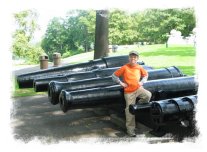
While we were waiting for the concert to begin, a barge came down river. There are a series of sharp bends in the river around West Point, and while watching it slowly navigate the bends, you can see how it would hardly require even cannon to stop a sailing vessel from going upstream – you could almost just throw rocks at them from that location.
The famous story of Benedict Arnold is associated with West Point. Despite being one of the American forces most successful commanders early in the war, Arnold was denied a promotion to Major General, mainly due to political reasons. Despite George Washington’s numerous attempts to correct the oversight, Arnold is never promoted when less successful generals are. Miffed at the Continental Congress, and also hurting in the pocketbook from an expensive wife, Arnold cooked up a plan to turn over the fort at West Point, which he was commanding, to the British.
In return for money, and a promised command, Arnold coordinated with British Major Tom Andre. A British sloop of war, the HMS Vulture, sailed up river to just below the fort to pickup Arnold. Driven off by cannon fire from several forts, the sloop is forced to move several miles downstream, which proves to be Arnolds near undoing. Unfortunately, for Major Andre, he is captured out of uniform by American forces when he can not reach the Vulture in time, and the plot collapses, although Arnold escapes. George Washington, largely in retaliation for the hanging of Nathanial Hale in New York City, insists that Andre be treated as a spy due to the lack of uniform, rather than as a commissioned officer, and Andre is hung. This creates an international incident, and 'Mr. Washington' is viewed as rather barbaric for his actions by the British.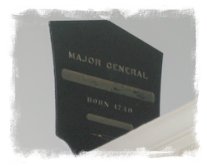
Today, in the old Cadet Chapel, numerous plaques honor various American military leaders. In the back of the chapel is a plaque with the name removed – this is in ‘honor’ of Benedict Arnold. There is no date of death on the plaque, so that Arnold ‘may never rest in peace’.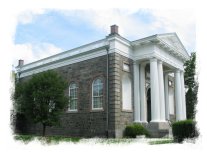
The old chapel is a wonderful building. To sit in the same spot as where Robert E. Lee, Winfield Scott and other legends sat is a humbling experience. The chapel was disassembled and moved, at the expense of the Corp of Cadets, when the newer and much large Cadet Chapel was built. Today, the old chapel sits at the edge of the cemetery.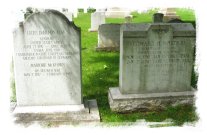
The cemetery contains numerous historic graves. Winfield Scott (Old Fuss & Feathers, and the hero of the Mexican War), Sylvanus Thayer, George Custer, and many others lie here. In one series of 3 graves in a row lies: Edward White (the first astronaut to spacewalk, and who was killed in the Apollo One fire); Lucius Clay (the commander of the Berlin Airlift); and George Goethals (builder of the Panama Canal); William Westmoreland (the commander in chief of the Vietnam War) lies nearby. It’s a pretty setting, and loaded with Generals and Colonels. Occasionally, a gravesite will mark a graduate with lower rank, and almost always when you check the date of death it is during wartime.
Back to the concert – we arrived just at dusk, and the view over the Hudson, with the lights from the stage, was simply amazing – with the possible exception of Red Rock Amplitheater in Colorado Springs, I can’t think of a more dramatic setting. The band played a very enjoyable concert, which was concluded with a performance of the 1812 Overture. I’ve got a CD of the Atlanta Symphony performing the 1812 Overture which was recorded using real cannon at the famous ending, and it’s pretty impressive on a big stereo system….
…or at least I thought so, until I heard the 1812 played with real cannon firing. One thing the Army certainly knows how to do is shoot artillery, and as the finale of the piece was reached, with chimes chiming and bells ringing and the chorus singing, multiple cannon started banging away along with the band. With the many echo's off Storm King Mtn and from across the river, it sounded like an entire artillery barrage all around you. Simply amazing, and something you’d have to experience to be able to fully appreciate….
…and then they started shooting off fireworks on top of that. I’ve seen more impressive fireworks displays in terms of sheer volume, but I’ve never seen one I’ve enjoyed more. The fireworks were shot from below along the river, so with us being several hundred feet above on the hillside, they appeared to explode right in front of your face. It was simply awesome. No ooooh and ahhhing….it was more like “WOW!’. The sound of the explosions was very loud, to the point of hurting your ears, and again, being the army, they kept coming without any breaks. I’ll never look at fireworks displays quite the same way after this one.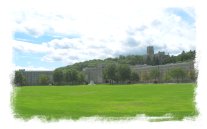
Blown away (almost literally) by the concert, we drove back down the next day (Labor Day) to tour the base and the Military Museum. The base tour is about what you would expect – we took the extended 2 hour tour, which takes you around the campus, to the Cadet Chapel, Trophy Point, Reviewing Field, and the Old Cadet Chapel and Cemetery.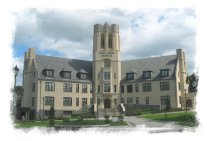
The Military Museum, which lies just outside the gates, was publicized as ‘one of the largest collections of Military artifacts in the world’. I had been really looking forward to viewing the museum, as I enjoy Military history. I was a bit disappointed, however, as we’ve seen so many outstanding museums lately, that the West Point Museum was merely average. It has sections on the various wars, and the weapons used, but not as much information about the leaders and troops as I expected. Don’t get the wrong impression, it’s not a bad museum, and it’s easy to spend ½ a day or so in there, but I didn’t feel it quite met the expectations that the publicity about the museum generates.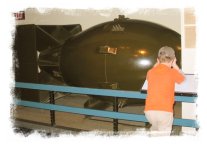
All in all it was an interesting couple of days spent at West Point. Vance showed an unexpected interest in some of the weapons, particularly an example of the ‘Fat Man’ atomic bomb casing. For some reason I can’t remember, we got into a discussion a few days ago on how nuclear bombs work (and nuclear reactions). He remembered a surprising amount of the technical detail I gave him, which I learned by overhearing him discuss the atomic bomb with another boy a few years older than him. Probably not the lesson I most wanted him to retain, but good to know he was paying attention….

Vance: West Point is a military academy located in
The day before they had a concert that had lots of fireworks. Finally we went to the fairground where they celebrate their graduations, and we finally finished
P.S The tour lady called me a future cadet!
P.P.S My friend Cory would love








<< Home